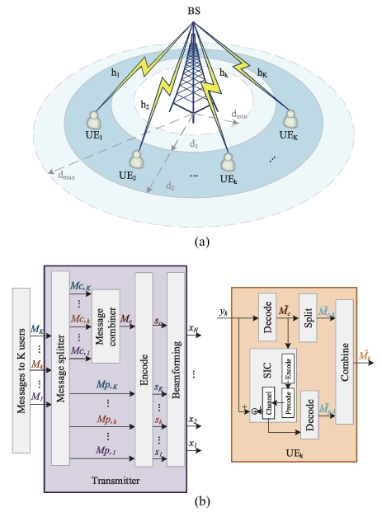Recently, the communication network and testing technology team of our school, teacher Zhu Jianyue, as the first author of IEEE Internet of Things Journal (SCI Area 1, three high T1 journal, impact factor 10.6), Joint Optimization of User Scheduling, Rate Allocation, and Beamforming for RSMA Finite Blocklength Transmission ", Nanjing University of Information Science and Technology was the first unit, and Zhu Jianyue was the first author and corresponding author.
With the rapid development of 6G wireless networks, especially in the application scenarios such as Enhanced Mobile Broadband (eMBB), Ultra-Reliable Low-latency communication (URLLC) and Massive machine type communication (mMTC), communication technology is facing the stringent requirements of higher data rate, extremely low latency and higher reliability. Rate-Splitting Multiple Access (RSMA) technology has become one of the key technologies in 6G systems due to its significant advantages in terms of spectrum efficiency, energy efficiency, quality of service and user fairness in multi-user multi-antenna communication networks. However, most of the existing research on RSMA technology is based on the assumption of infinite block length transmission. Although this assumption simplifies the problem in theoretical analysis, it is quite different from the actual data transmission mode, so the study of finite block length transmission is particularly important. In this study, the RSMA technique is first introduced into the finite block-length transmission scenario and a joint optimization scheme for user scheduling, rate allocation and beamforming is proposed. By designing an algorithm based on alternating optimization and combining techniques such as strong Lagrange dual method and differential programming for convex functions, the complex optimization problems are successfully solved. The simulation results verify the effectiveness of the proposed method, which provides valuable reference and enlightenment for the further development of 6G wireless network.

Figure 1 MISO RSMA FBL transmission link description: (a) user distribution (b) RSMA transceiver architecture
The article links: https://ieeexplore.ieee.org/document/10591333
